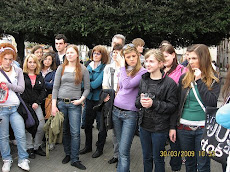Easter, in our region, is a rich and interesting occasion to see the characteristic processions during the Holy week. This tradition goes back to medieval times. Sorrento, Procida, Somma Vesuviana and Acerra are the places where the processions keep their most intense pathos and at the same time represent also important cultural events. The long parades are followed by a huge crowd deeply involved in the symbolic pathos of the scenes representing Christ’s death.
Festival, tradition, deep attachment to roots: Campania still preserves its special attitude of people to dramatize feelings linked to penance and death. The processions, the songs and prayers show people’s deep religious faith. During the Holy week, the long processions represent human wander in the world and the desire to elevate oneself and expiate sin. In the centuries many traditions have disappeared bec
 ause the way to be Christian and to live religion has changed. Sorrento and all the mentioned villages have been able to preserve the true involvement to the Holy Week liturgy. The processions have become a moment of aggregation and meditation as well as an important attraction for tourists.
ause the way to be Christian and to live religion has changed. Sorrento and all the mentioned villages have been able to preserve the true involvement to the Holy Week liturgy. The processions have become a moment of aggregation and meditation as well as an important attraction for tourists.In Procida two thousand people, all dressed with a white habit and violet cape, take part to the procession on Good Friday. The deep pathos and feelings incite young people to work late in the night, to build the symbols of passion, in the entrance halls and front yards of the oldest building on the island..
Four centuries of history boasts the Via C
 rucis in Somma Vesuviana, organized on the evening of Good Friday, with a very long parade of about two thousand people, following the Madonna of Dead Christ. In the little town at the foot of the mount Somma next to Vesuvius, the tradition dates back to 1630, once again Spanish introduced it.In Acerra the procession on Good Friday is really spectacular with its three thousand torches, lit all around the baron castle, and taken there by black clothed women.On the notes of the Hymn to Maria Santissima Addolorata, sung by three hundred young female voices, the procession goes around the town. The parade starts in the early afternoon from the main square “Piazza Castel
rucis in Somma Vesuviana, organized on the evening of Good Friday, with a very long parade of about two thousand people, following the Madonna of Dead Christ. In the little town at the foot of the mount Somma next to Vesuvius, the tradition dates back to 1630, once again Spanish introduced it.In Acerra the procession on Good Friday is really spectacular with its three thousand torches, lit all around the baron castle, and taken there by black clothed women.On the notes of the Hymn to Maria Santissima Addolorata, sung by three hundred young female voices, the procession goes around the town. The parade starts in the early afternoon from the main square “Piazza Castel lo”. People wear typical costumes representing eight scenes of Passion. At the head of the procession, the representation of Christ’s arrival in Jerusalem, the Last Supper, the betrayal, the sentence to death and the crucifixion.
lo”. People wear typical costumes representing eight scenes of Passion. At the head of the procession, the representation of Christ’s arrival in Jerusalem, the Last Supper, the betrayal, the sentence to death and the crucifixion. Whoever is lucky to visit our Region at Easter will have the chance to taste two typical Easter cakes: the "casatiello" and the "pastiera".Here reality very often mingles with legend and this is one of the characteristics which makes our area so rich in magic. Also the history of the pastiera is tied to a legend: the myth of the mermaid Partenope.































